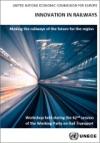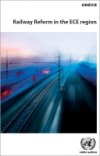Publications
Displaying Results 21 - 35 of 35
- English
Organizations around the world are quickly adapting their programme and project activities to respond to the COVID-19 pandemic and its consequences. The UN Road Safety Fund is committed to the principles of adaptive programming, partnerships, and relevance. The operationalization of these principles is even more critical during this unparalleled time. This flyer provides tools and tips for
- English
The UNRSF 2019 Annual Report is now available. Established two years ago as an innovative United Nations pooled fund, the Annual Report showcases the first concrete results of the UNRSF and thus demonstrates its potential to meet its ambition to substantially reduce death and injuries from road crashes in low and middle-income countries where 93% of the world fatalities occur.
- English
The April 2020 marks the second anniversary of the launch of the United Nations Road Safety Fund (UNRSF). The Fund is now financing 15 projects in 20 low- and middle-income countries to substantially reduce death and injuries from road crashes and to reduce economic losses resulting from these crashes.
- English
As part of the ongoing activities of the Working Party on Rail Transport (SC.2) a workshop titled “Making rail freight more competitive: The coordinated development of the rail network with a focus on how to work together at the government and sectoral levels on the EATL” was held at the seventy-third session of the Working Party.Over 60 participants from national administrations,
- English
As part of the ongoing activities of the Working Party on Rail Transport (SC.2) a workshop titled “Making the railways of the future for the region” was held at the seventy-second session of the Working Party.Over 65 participants from national administrations, international organizations, non-governmental organizations and the private sector discussed, over a number of sessions, the role of
- Pусский
This study on railway reform in the ECE Region looks at the history of railway reform within its member States and looks at how it has been implemented through a number of examples, highlighting that railway reform across the ECE region has taken different forms in terms of institutional structure, market participants and development of the sector.
- Français
This study on railway reform in the ECE Region looks at the history of railway reform within its member States and looks at how it has been implemented through a number of examples, highlighting that railway reform across the ECE region has taken different forms in terms of institutional structure, market participants and development of the sector.
- English
This study on railway reform in the ECE Region looks at the history of railway reform within its member States and looks at how it has been implemented through a number of examples, highlighting that railway reform across the ECE region has taken different forms in terms of institutional structure, market participants and development of the sector.
The United Nations Transport Conventions on border crossing facilitations – Benefits for governments
- English
This leaflet, prepared by the Sustainable Transport Division of the UNECE in cooperation with the International Road Transport Union (IRU), highlights the importance and potential benefits to Contracting Parties of the Customs Convention on the International Transport of Goods under Cover of TIR Carnets and the International Convention on the Harmonization of Frontier Controls of Goods.It
- English
- English
- English
Практическое руководство для правительственных ведомств и организаций частного сектора, которые осуществляют деятельность в пунктах пересечения границ. Опубликован ОБСЕ и Европейской экономической











